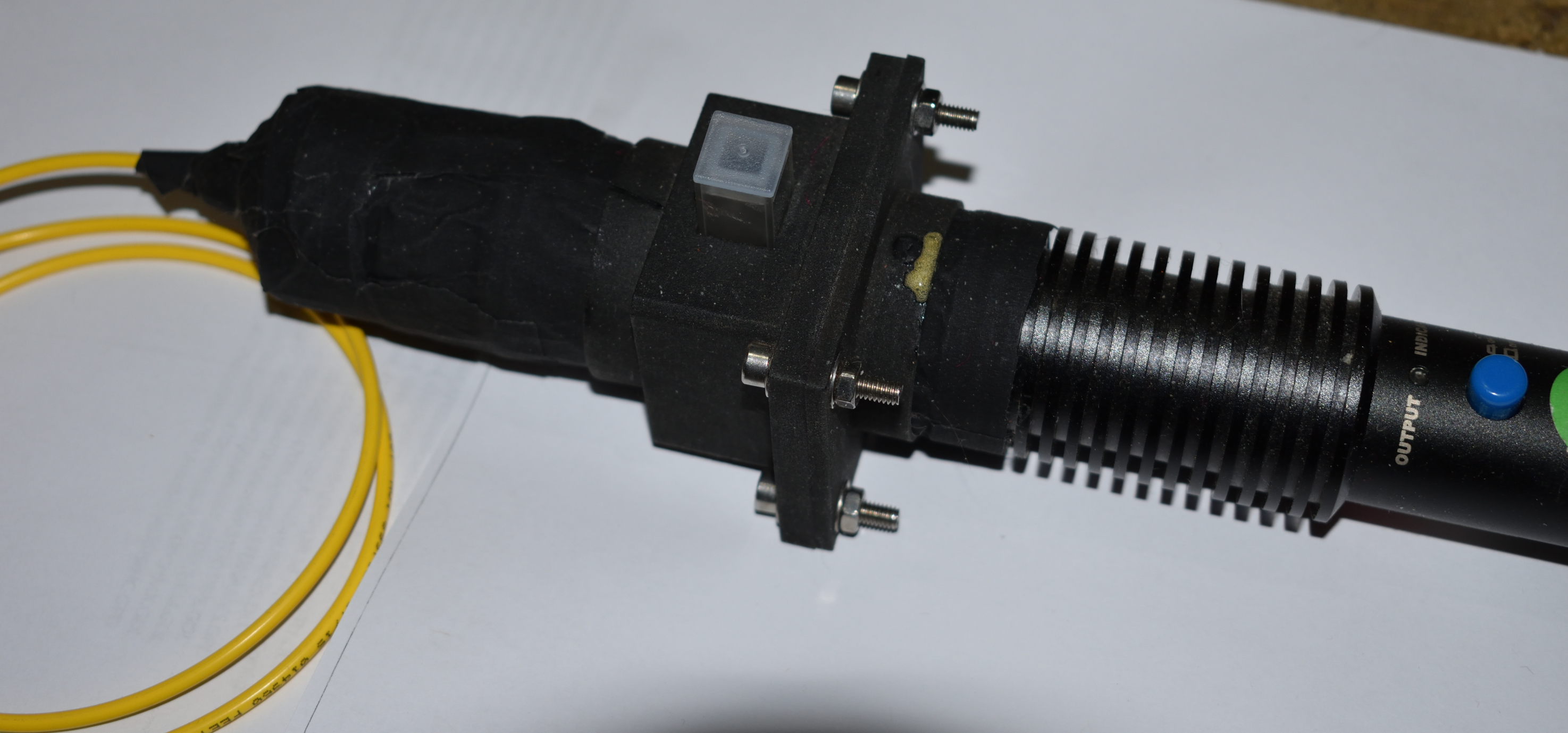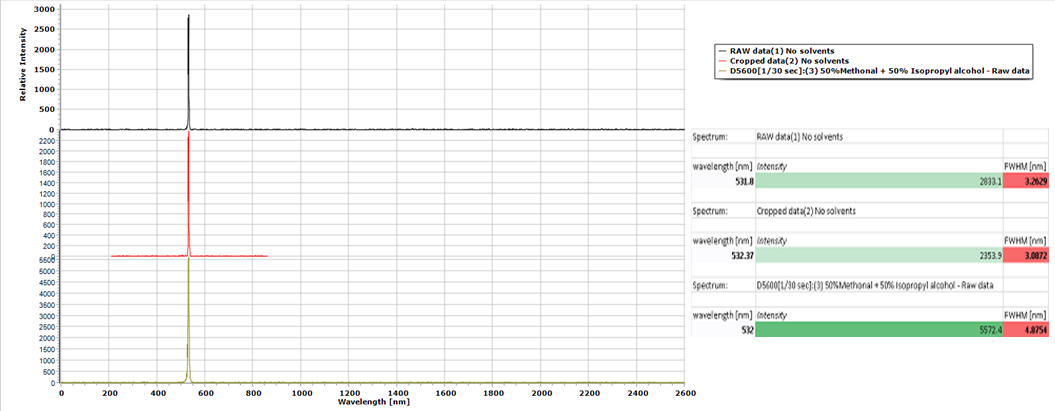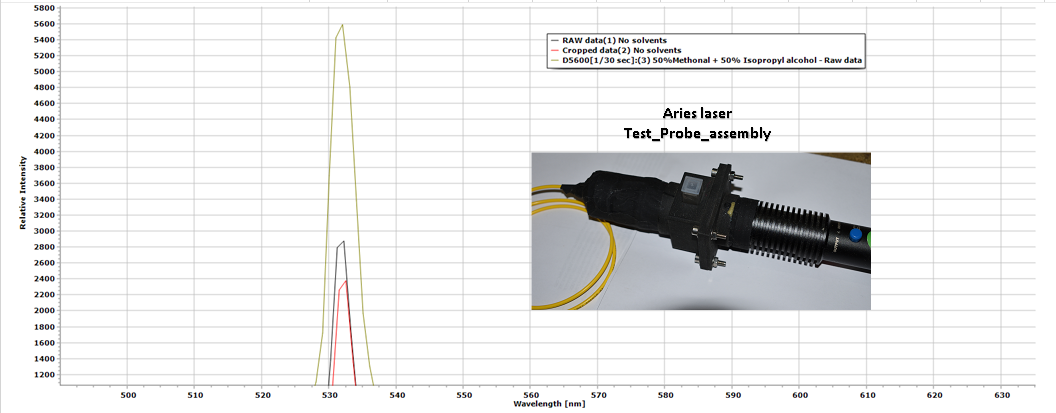For anyone wondering what is the point with all these preliminary tests, well, its important because I need the cleanest laser line with the lowest SNR (signal to noise ratio,) possible, even though the Notch filter will block the line, it will not eliminate a poor signal.

The above image is what I have been using, sort of a "mock-up" of the real probe, without the Notch filter in order to shape the laser line correctly and adjust the DSLR camera settings.

This was my final SNR test, I used a standard 1cm Quartz cuvette filled with a 50% solution of Methanol and 50% Isopropyl alcohol and an empty cuvette as a blank.

This zoomed in plot, represents all 3 spectrums in comparision to each other, the first is the raw data (un-processed,) the second is the raw data cropped in RSpec in order to get a more refined signal, the third is the sample withe solvent solution.
As you may notice there is a noticable difference in intensity, that's because the solvent exibits a higher refractive index as compared to just the refractive index of the empty cuvette, plus there is a higher S1 to S2 energy transfer going on.
The only problem I can see with this plot is at the peaks you can tell a slight "clipping," to the left, that is camera adjustment territory (exposure and F-stop).
 David H Haffner Sr
David H Haffner Sr
Discussions
Become a Hackaday.io Member
Create an account to leave a comment. Already have an account? Log In.